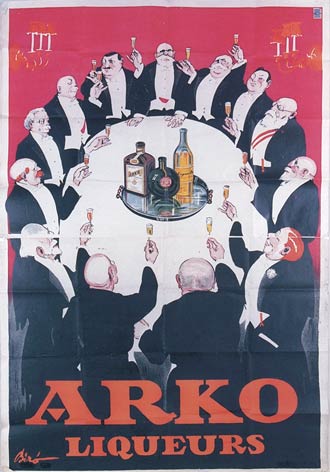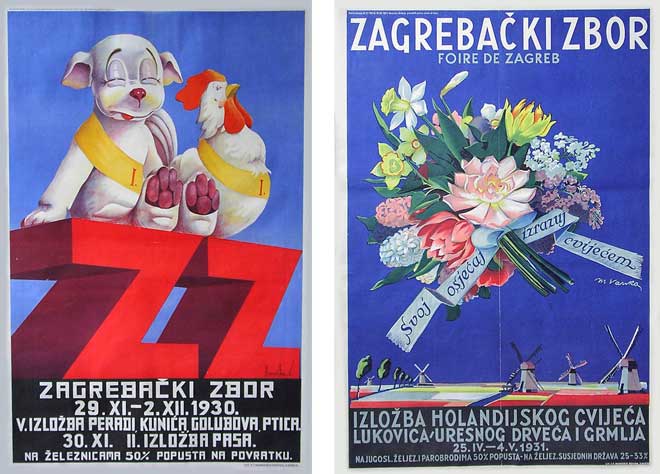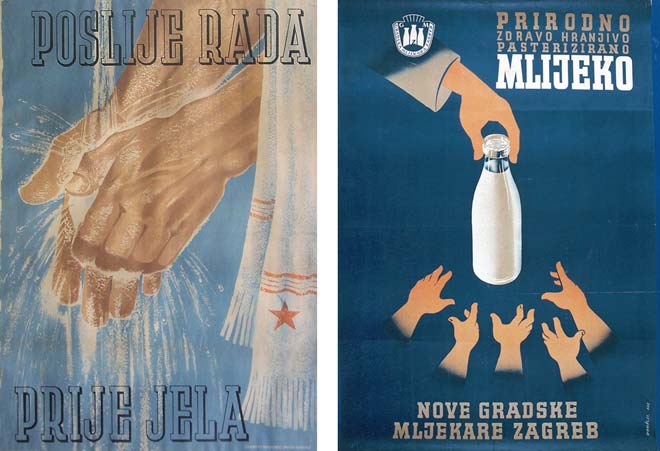Permanent Display 45. Echoes of Events in Zagreb
 In the public areas of the city, posters attempted to sway the public with their messages, and with the textual and pictorial characteristics of the time. They were often shaped as a metaphorical image of the taste of the milieu in which they were created, as signs of the power of society, and promotion of it, during historical changes. This is in a way a time machine – a review of life in the city during the 20th century, seen through illustrations.
In the public areas of the city, posters attempted to sway the public with their messages, and with the textual and pictorial characteristics of the time. They were often shaped as a metaphorical image of the taste of the milieu in which they were created, as signs of the power of society, and promotion of it, during historical changes. This is in a way a time machine – a review of life in the city during the 20th century, seen through illustrations.
The holding of the great business event the Zagrebački zbor, starting in 1910, encouraged many foreigners to come to the capital city. With respect being paid to the principles of contemporary advertising, drawing the attention through attractive announcements, advertisements in the new conditions of supply and demand, Zagreb got its first and oldest tourist poster – as well as the slogan “Zagreb – beautiful Croatia”.
Mass production of posters began after World War I. Specialised events of the Zagreb zbor (predecessor of the Zagreb Fair), sporting events, concerts and exhibitions for lovers of art were announced, products were advertised to win a share of the market; this method of public communication became so common that what had been works of applied art turned into a medium and in 1928 IMAGO – the Institute for the scientific study of advertisements and artistic advertising production was founded, the germ of future specialised advertising agencies.
 In the Independent State of Croatia era, the Exhibition Graphic Section (known as IGO for short in Croatian), part of the state’s Propaganda service, worked in the Flower Square, where the artists employed produced hundreds of war propaganda posters, more and more aggressive as the war came closer to its end.
In the Independent State of Croatia era, the Exhibition Graphic Section (known as IGO for short in Croatian), part of the state’s Propaganda service, worked in the Flower Square, where the artists employed produced hundreds of war propaganda posters, more and more aggressive as the war came closer to its end.
And when, after 1945, OLIKPROP was given the task of using the poster to convince the masses, content and typology were united all the way down to announcements of what was on at the cinema – exclusively Soviet films.
In the 50s and 60s very great differences appeared. On the one hand the illusion of general social prosperity was proffered: exhibitions of big economic successes, invitations to the workers to go to the seaside (in autumn, with a 70% discount), comfortable walking for the whole family in Astra shoes.
At the same time, in spite of the doctrine of socialist realism, posters began to be given a modern form. In the Student Centre, the programme of the &TD Theatre had its own distinctive visual identity, the biennial IFSK festival (International Student Theatre Festival) was held, and the SC Gallery was in operation. The SC silk-screen graphic studio was the place for the production of posters for almost all areas of art. Because excellent artists were engaged, this form of public communication attained high standards in Zagreb, which was recognised even at the international level.
Željka Kolveshi







